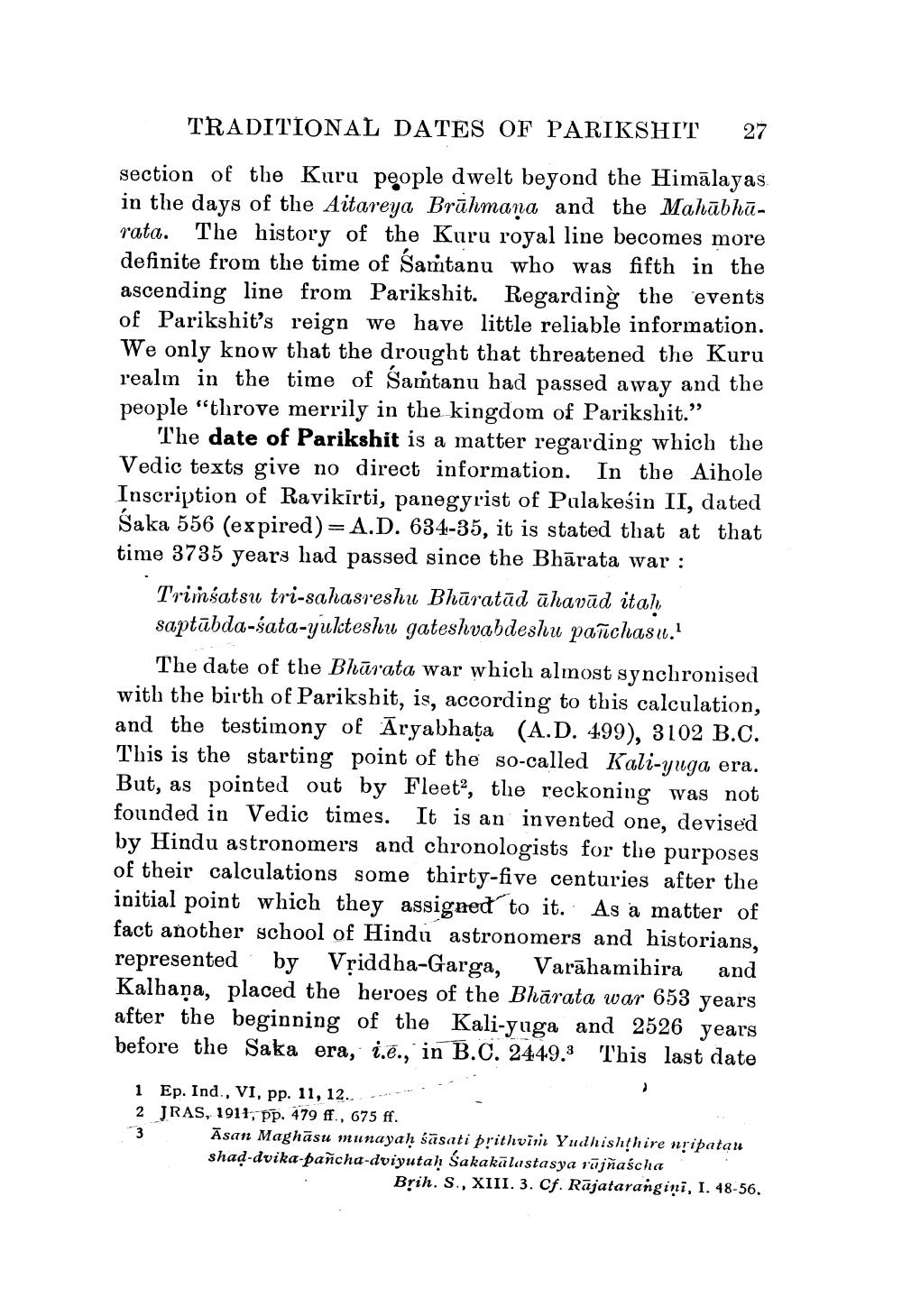________________
TRADITIONAL DATES OF PARIKSHIT 27 section of the Kuru people dwelt beyond the Himālayas. in the days of the Aitareya Brāhmana and the Mahābhūrata. The history of the Kuru royal line becomes more definite from the time of Samtanu who was fifth in the ascending line from Parikshit. Regardinġ the events of Parikshit's reign we have little reliable information. We only know that the drought that threatened the Kuru realm in the time of Samtanu had passed away and the people "throve merrily in the kingdom of Parikshit."
The date of Parikshit is a matter regarding which the Vedic texts give no direct information. In the Aihole Inscription of Ravikirti, panegyrist of Palakesin II, dated Śaka 556 (expired)= A.D. 634-35, it is stated that at that time 3735 years had passed since the Bhārata war :
Trimsatsu tri-sahasreshu Bhūratād āhavād italı saptūbda-sata-yuleteshu gateshvabdeshu pañchasu.'
The date of the Bhārata war which almost synchronised with the birth of Parikshit, is, according to this calculation, and the testimony of Aryabhata (A.D. 499), 3102 B.C. This is the starting point of the so-called Kali-yuga era. But, as pointed out by Fleet, the reckoning was not founded in Vedic times. It is an invented one, devised by Hindu astronomers and chronologists for the purposes of their calculations some thirty-five centuries after the initial point which they assigned to it. As a matter of fact another school of Hindu astronomers and historians, represented by Vriddha-Garga, Varāhamihira and Kalhaņa, placed the heroes of the Bhārata war 653 years after the beginning of the Kali-yuga and 2526 years before the Saka era, i.e., in B.C. 2449.3 This last date
1 Ep. Ind., VI, pp. 11, 12. ----- 2 JRAS, 1911, pp. 479 ff., 675 ff.
Āsan Maghāsu munayah sāsati prithviri Yudhishthire nripatau shad-dvika-pañcha-dviyutah Sakakālastasya rājñaścha
Brih. S., XIII. 3. Cf. Rājatarangini, I. 48-56.
3




